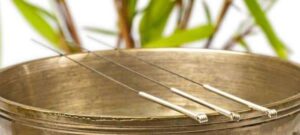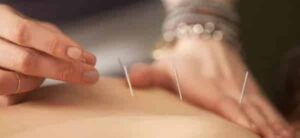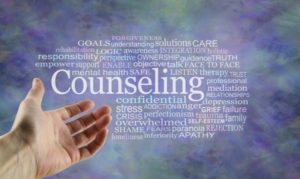Acupuncture has been used effectively as a holistic healing practice for thousands of years, however, this modality didn’t gain popularity in the US until the 70s. Interestingly enough, it was shortly after President Nixon’s trip to China, where one of his journalist companions used acupuncture to relieve post-surgical pain. It worked so well, the man wrote about it in the New York Times, effectively sparking interest in the practice. While many laud the efficacy of acupuncture practices, there are many myths surrounding the modality. Let’s debunk those right now.
Myths about Acupuncture — It’s More than Just Pins and Needles
You know the adage, “Don’t knock it until you’ve tried it.” If you’ve been hesitant to receive these healing treatments due to fears, read on as we dispel the myths about acupuncture.
 Myth #1 — Acupuncture Hurts
Myth #1 — Acupuncture Hurts
Most people associate needles with the type used by doctors to give injections, and yes — those hurt. However, acupuncture needles are minuscule in size (.25 mm) compared to traditional ones (28.5 mm). Most patients only experience a slight bit of tingling upon insertion and a bit of a heavy feeling in the area as it puts pressure on certain nerves.
Myth #2 — Acupuncture is Like Snake Oil
Many believe that sticking a bunch of needles into the body to heal anything is just a bunch of hocus pocus, claiming “it’s not real medicine.” It can be argued that ANY practice that promotes healing effectively is a form of medicine. Remember, many Native tribes called their healers ‘Medicine Men,’ yet they weren’t professionally trained doctors. Considering the fact that acupuncture is now practiced all over the world, it’s clearly more than a snake oil scheme.
 Myth #3 — Acupuncture Spreads Disease
Myth #3 — Acupuncture Spreads Disease
Mostly myth. I say mostly because if you don’t go to a licensed and properly trained practitioner, there’s a real chance of making this myth your truth. Acupuncturists can only earn licensure through earning a certificate in “Clean Needle Technique,” and they’ll only use disposal needles that are used only once.
Myth #4 — Acupuncture Only Treats Pain
Nothing could be further from the truth! What is true, is that it’s most commonly used to treat pain, but it’s rapidly being accepted as an effective holistic healing method for a variety of physical issues. In fact, the World Health Organization lists more than 200 conditions that acupuncture can effective treat including:
- Neurological Disorders
- Cardiovascular Conditions
- Gastrointestinal Issues
- Respiratory Disorders
- Musculo-skeletal Disorders
- Ear, Nose, Mouth, Eye & Throat Conditions
- Psychological Disorders
Personally, I have used acupuncture to curb binge cigarette smoking on ‘bad’ days and restore motion in my arm after having a stroke, and both issues were quickly resolved after treatments. These pins and needles are literally medical marvels, and I’m stuck on acupuncture.
 Myth # 5 — Acupuncture is Just Dry Needling
Myth # 5 — Acupuncture is Just Dry Needling
It’s true that dry needling is a form of acupuncture, but the primary differences are that no substance is induced onto the needle tips in dry needling and no license is required to practice it. Chiropractors and physical therapists often use dry needling techniques, and one must use caution to ensure their provider is trained and utilizes clean needles.
Myth #6 — Acupuncture Isn’t Scientifically Proven
False. In addition to proof that acupuncture relieves pain, scientific studies on its healing abilities along with thousands of years of observing its efficacy debunks these myths about acupuncture. After all, the World Health Organization wouldn’t recommend it for so many things if science didn’t support the claims.
Hopefully, you feel a little more comfortable with giving this ancient Chinese healing practice a ‘shot’ with these myths about acupuncture soundly dispelled.


 Myth #1 — Acupuncture Hurts
Myth #1 — Acupuncture Hurts Myth #3 — Acupuncture Spreads Disease
Myth #3 — Acupuncture Spreads Disease Myth # 5 — Acupuncture is Just Dry Needling
Myth # 5 — Acupuncture is Just Dry Needling





